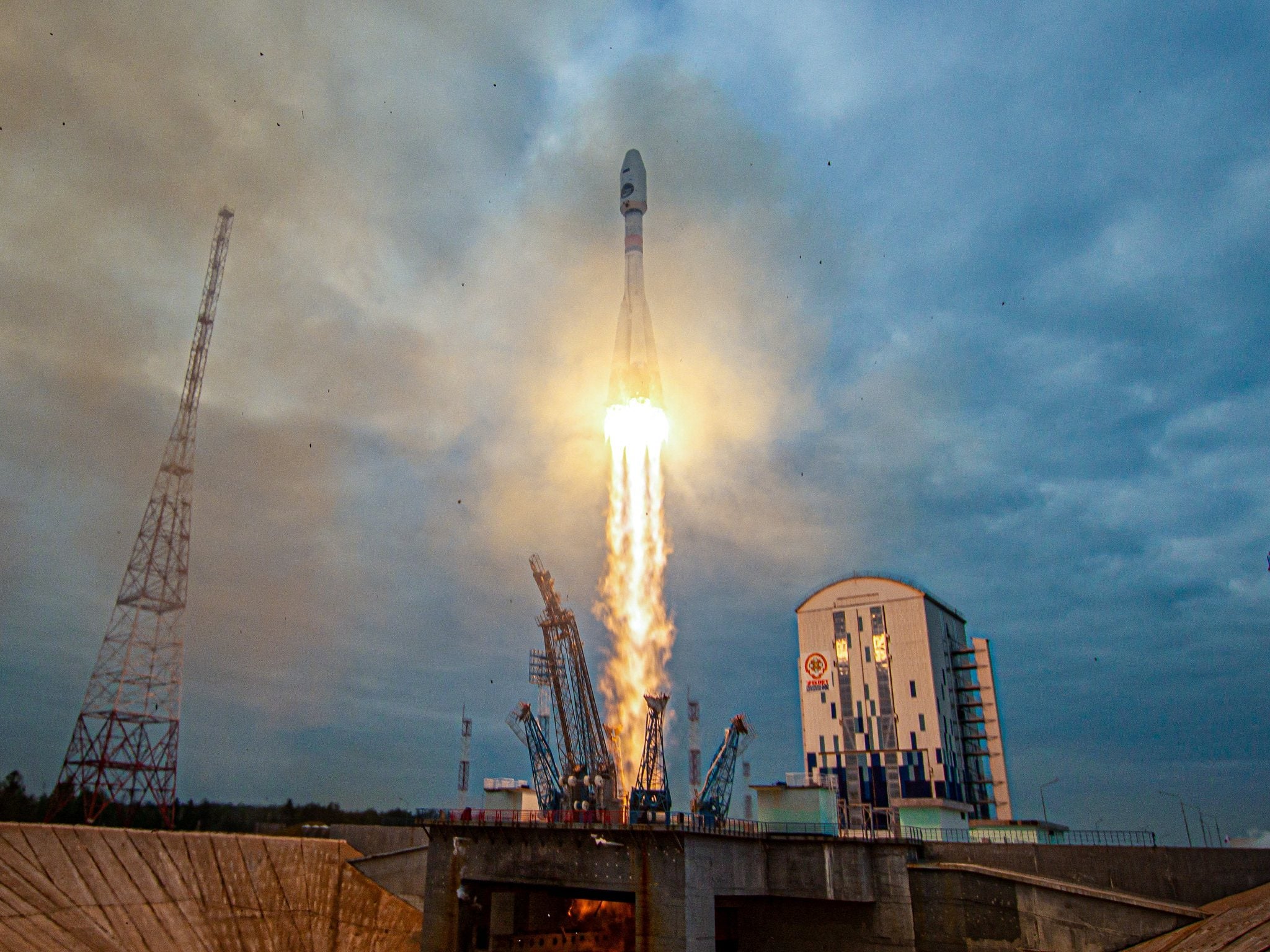Russia launches first moon lander in nearly 50 years in race to find water
Major powers such as the United States, China, India, Japan and the European Union have all been probing the moon in recent years

Russia has launched its first moon-landing spacecraft in almost 50 years in a bid to be the first nation to make a soft landing on the lunar south pole, a region believed to hold coveted pockets of water ice.
The Russian lunar mission, the first since 1976, is racing against India, which launched its Chandrayaan-3 lunar lander last month, and more broadly with the United States and China, both of which run advanced lunar exploration programmes targeting the lunar south pole.
A Soyuz 2.1 rocket carrying the Luna-25 craft blasted off from the Vostochny cosmodrome, 3,450 miles (5,550 km) east of Moscow, at 2.11am Moscow time on Friday.
The lander was boosted out of Earth’s orbit towards the moon more than an hour later, at which point mission control took command of the craft, Russia’s space agency Roscosmos said. The lander is expected to touch down on the moon on 21 August, Russia’s space chief Yuri Borisov told state television, though the space agency previously pegged 23 August as the landing date.
“Now we will wait for the 21st. I hope that a highly precise soft landing on the moon will take place,” Mr Borisov told workers at the Vostochny cosmodrome after the launch. “We hope to be first.”
Luna-25, which is roughly the size of a small car, will aim to operate for a year on the moon’s south pole, where scientists at Nasa and other space agencies in recent years have detected traces of water ice in the region’s shadowed craters.
There is much riding on the Luna-25 mission, as the Kremlin says the West’s sanctions over the Ukraine war, many of which have targeted Moscow’s aerospace sector, have failed to cripple the Russian economy.
The moonshot will also test the nation’s growing independence in space after its February 2022 invasion of Ukraine severed nearly all of Moscow’s space ties with the West, besides its integral role on the International Space Station.
The European Space Agency had planned to test its Pilot-D navigation camera by attaching it to Luna-25, but severed its ties with the project after Russia invaded Ukraine.
“Russia’s aspirations towards the moon are mixed up in a lot of different things. I think, first and foremost, it’s an expression of national power on the global stage,” said Asif Siddiqi, professor of history at Fordham University.
US astronaut Neil Armstrong gained international renown in 1969 for being the first person to walk on the moon, but the Soviet Union’s Luna-2 mission was the first spacecraft to reach the moon’s surface in 1959, and the Luna-9 mission in 1966 was the first to make a soft landing there.
Moscow then focused on exploring Mars, and since the fall of the Soviet Union in 1991, Russia has not sent scientific probes beyond Earth’s orbit.
For centuries, astronomers have wondered about water on the moon, which is 100 times drier than the Sahara. Nasa maps in 2018 showed water ice in shadowed parts of the moon, and in 2020 Nasa confirmed that water also existed in sunlit areas.
Major powers such as the United States, China, India, Japan and the European Union have all been probing the moon in recent years. A Japanese lunar landing failed last year and an Israeli mission failed in 2019.
No country has made a soft landing on the south pole. An Indian mission, Chandrayaan-2, failed in 2019.
Rough terrain makes a landing there difficult, but the prize of discovering water ice could be historic: it may be possible to extract fuel and oxygen, as well as to use the supply for drinking water. Mr Borisov said at least three other lunar missions were planned over the next seven years, and that after that, Russia and China would work on a possible crewed lunar mission.
“My colleagues and I from China will move on to the next phase – the possibility of a manned mission to the moon and the construction of a lunar base,” he said.
Maxim Litvak, head of the planning group for the Luna-25 scientific equipment, said the most important task was to land where no one else had landed – and to find water. “There are signs of ice in the soil of the Luna-25 landing area,” he said, adding that Luna-25 would work on the moon for at least an Earth year, taking samples.
Roscosmos said it would take five days to fly to the moon. The craft will spend five to seven days in lunar orbit before descending to one of three possible landing sites near the pole – a timetable that implies it could match or narrowly beat its Indian rival to the moon’s surface.
Chandrayaan-3 is due to run experiments for two weeks.
With a mass of 1.8 tonnes and carrying 31kg (68lb) of scientific equipment, Luna-25 will use a scoop to take rock samples from a depth of up to 15cm (6in) to test for the presence of frozen water.
Reuters
Join our commenting forum
Join thought-provoking conversations, follow other Independent readers and see their replies
Comments